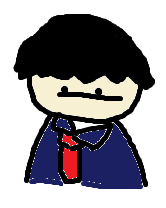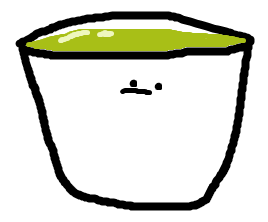Let's take a closer look at the history of tea leaves and the history of
tea!
・Early Heian period (815)
"Nihon Kokuki" →"Nagachu brewed tea and offered it"
Tea at that time was extremely valuable, and only a limited number of people, such as monks and aristocrats, could drink
it. |
 |
Kamakura to the period of the Northern and Southern Courts
・Eisai → I studied Zen Buddhism twice over Eisai and saw and heard that tea ceremony was actively held. After returning
to Japan, Eisai "preached the benefits of tea in Japan's first technical book on tea." (Presenting tea to Minamoto no Sanetomo as a good medicine)
・From the end of the Kamakura period to the Northern and Southern Dynasties,
"tea gardens centered on temples spread further from Kyoto.″
・Kamakura period → Cafes spread among the samurai class as a social tool.
・Northern and Southern Courts period→“Tocha” was held to compare teas and guess the production area.
|
  |
Muromachi to Azuchi-Momoyama period
・Yoshimitsu Ashikaga → Gives special status to Uji tea
was inherited by Toyotomi Hideyoshi. With this, the Uji tea brand was formed. ・Murata Rinkocreated “Wabicha”. Shoo Takeno and Sen no Rikyu, who inherited him, completed the tea ceremony. Infiltrated wealthy merchants and samurai.
|
 |
Edo Period
・The tea ceremony was formally incorporated into the ceremonies of the Edo Shogunate and became an integral part of samurai society.
・Soen Nagatani → Carefully revised the tea-making method and devised an excellent method for producing sencha.
It is called the ancestor of sencha. He created the "Uji method'' and made it the mainstream of Japanese
tea.
・Early modern times→There were people who traded tea under a license system at distribution bases called tea towns.
・When the Japan-US Treaty of Amity and Commerce was concluded with the United States, 181 tons of tea was exported as
an important export item along with raw silk, taking advantage of the opening
of the port. |
  |
Meiji period to early Showa period
・Collective tea gardens are formed on flat land. Farmers inherited the tea plantation instead of the samurai class. ・The formation of collective tea farms not only affected the formation
of tea farms, but also the development of distribution, tea merchants,
brokers, training, and the invention of various machines.
・Mechanization progressed rapidly, contributing to stabilization of quality along with labor saving.
・It was surprisingly new as it took root in Japanese people's lives from
the end of the Taisho era to the beginning of the Showa era, when it changed to a beverage of choice for the domestic market.
|
 |
Late Showa period
・In 1981, canned oolong tea was released.
・In 1985, sencha in cans was sold.
・In the 30's of the Showa era, the domestic consumption of green tea increased, and domestic tea production could not keep up with the price soaring.
・In 1966, the import volume of tea exceeded the export volume.
・Per capita tea consumption decreased.
|
 |
 |
Heisei
・In 1990, green tea in plastic bottles was released.
・On April 24, 2015, Kyoto's Yamashiro (8 municipalities in the Yamashiro area) was certified as a Japan Heritage site. (Uji City, Joyo City, Yawata City, Kyotanabe
City, Ujita City, Kizugawa City, Wazuka Town, Minamiyamashiro Village Welfare
Cultural Assets)
・In April 2016, four towns in Kyoto (Kumiyama-cho, Ide-cho, Kasagi-cho, and Seika-cho) were newly added to the Constituent Cultural Properties (Japan Heritage).
・As a result, all of the 12 municipalities in the Yamashiro region of the
"Ocha no Kyoto" area now have constituent cultural assets.
|
 |
|
 
|

